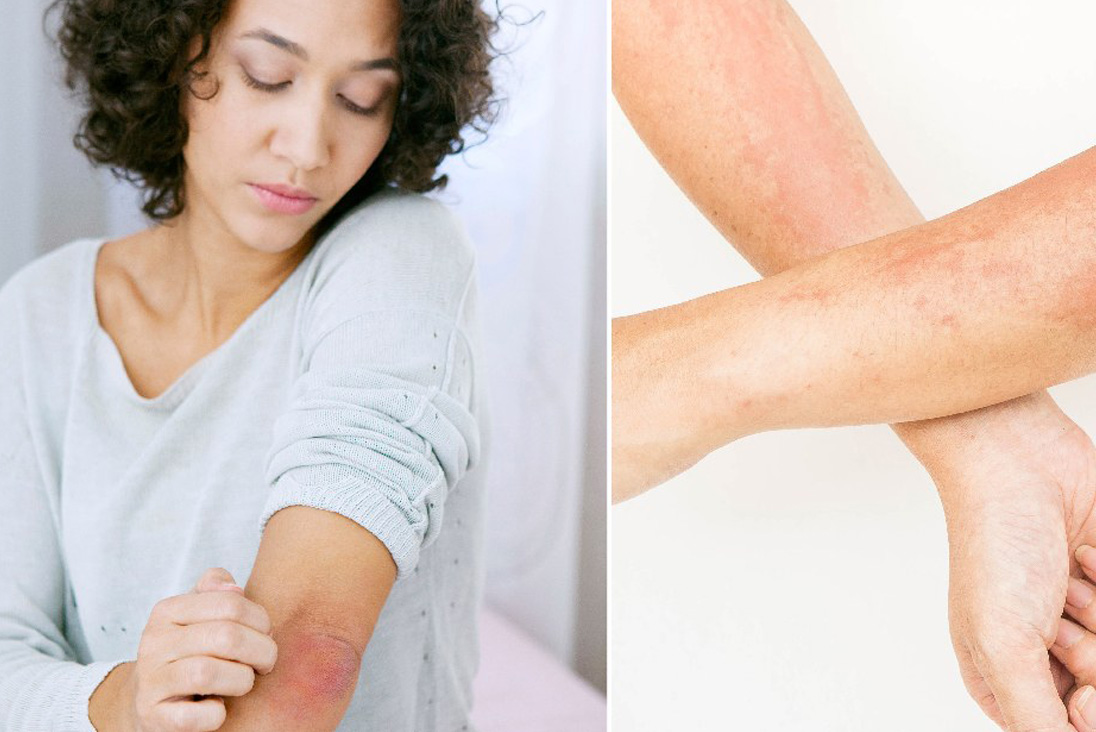Itchy Round Spot on Skin: Red Circle on the Skin But Not Ringworm – Other Causes
What causes a red circle on the skin that is not ringworm? Explore other skin conditions like pityriasis rosea, contact dermatitis, nummular eczema, and granuloma annulare that can create scaly patches or rings resembling ringworm.
Pityriasis Rosea: A Common Mild Skin Rash
Pityriasis rosea is a common, mild skin rash that may last for 6-8 weeks and often clears up on its own. The initial signs of infection include headache, fever, and cold-like symptoms. Soon after, a single scaly patch, about 2-10 centimeters (cm) in size, forms on the torso or neck. When the first patch appears, it can be mistaken for ringworm. As the condition runs its course, the rash spreads out into larger blotches.
The rash is not painful but may be itchy. In those with darker skin tones, it may appear gray, dark brown, or black and can cause flat dark spots lasting several months. In those with lighter skin tones, it may appear pink or red but rarely forms scars. The cause of pityriasis rosea is most likely the cold sore virus, but the sores are not contagious and cannot spread to others through physical contact. Pityriasis rosea can also occur a couple of weeks after a COVID-19 infection.

Contact Dermatitis: Skin Irritation from Allergens
Contact dermatitis is a form of eczema that results from something coming into contact with the skin. As contact dermatitis can cause patches of thickened, scaly skin, it can be confused with ringworm. The patches may appear dark brown, purple, or gray on darker skin tones, while they usually appear bright red on lighter skin tones.
A person with contact dermatitis may be allergic to certain metals, such as nickel or cobalt, ingredients in cosmetics or soaps, or materials such as latex. “Contact dermatitis” can also describe skin irritations such as diaper rash or cracked skin after too much handwashing or dishwashing. In severe cases, the area may bleed or ooze.
Nummular Eczema: Coin-Shaped Itchy Patches
Nummular eczema, also known as discoid eczema, is a disorder that causes coin-shaped patches of itchy, swollen skin to appear. This type of eczema occurs mainly on hands, arms, or legs and sometimes on the trunk.
Ringworm and nummular eczema both look similar because of a circular rash pattern. However, nummular eczema starts as tiny spots that turn into a rash, while ringworm spreads out with a clear center encircled by a discolored ring. These spots measure 2-10 cm across, although they may be smaller. On lighter skin tones, they appear scaly and pink or red. The areas will look much darker or lighter on darker skin tones. Itching or burning sensations in these areas worsen at night and can be severe. Often, patches will flare up in the same spots on the body, and in serious cases, patches can leak fluid or crust over.
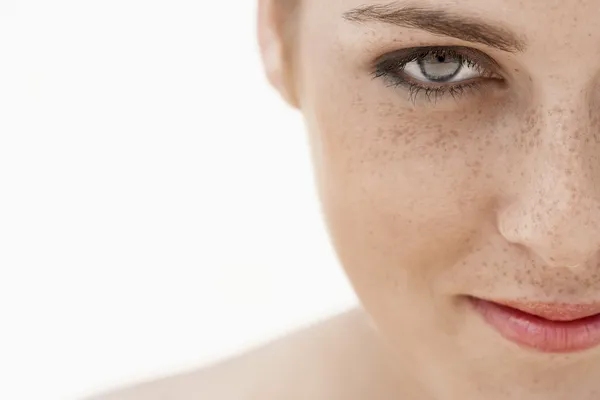
It is not clear what causes nummular eczema, but dry skin, extreme stress, sensitivity to a particular metal, and medication may all be triggers. Also, the symptoms worsen in cold, dry climates and in people with poor blood circulation.
Granuloma Annulare: A Rare Skin Disorder
Granuloma annulare is a rare, chronic skin disorder that is not contagious or cancerous. Although the affected skin looks like ringworm, the center of the rash remains a solid color.
In this condition, a raised round rash forms with a distinctive border of small, firm bumps. These bumps grow into a ring and mainly develop on the feet, legs, hands, or arms. The rash can appear deeper in color on darker skin, with a purplish-red edge around the outside. On lighter skin tones, the site may be yellow, red, or flesh-colored. The rash is not usually painful or itchy and will often fade without treatment. There are many types of granuloma annulare, but the most common type is localized, primarily affecting children.
Experts are not sure exactly what causes granuloma annulare, but it may involve injury to the skin with a bug bite, tattoo, or stitches, taking certain medications, such as calcium channel blockers or ACE inhibitors, or viral infections, including shingles or COVID-19.
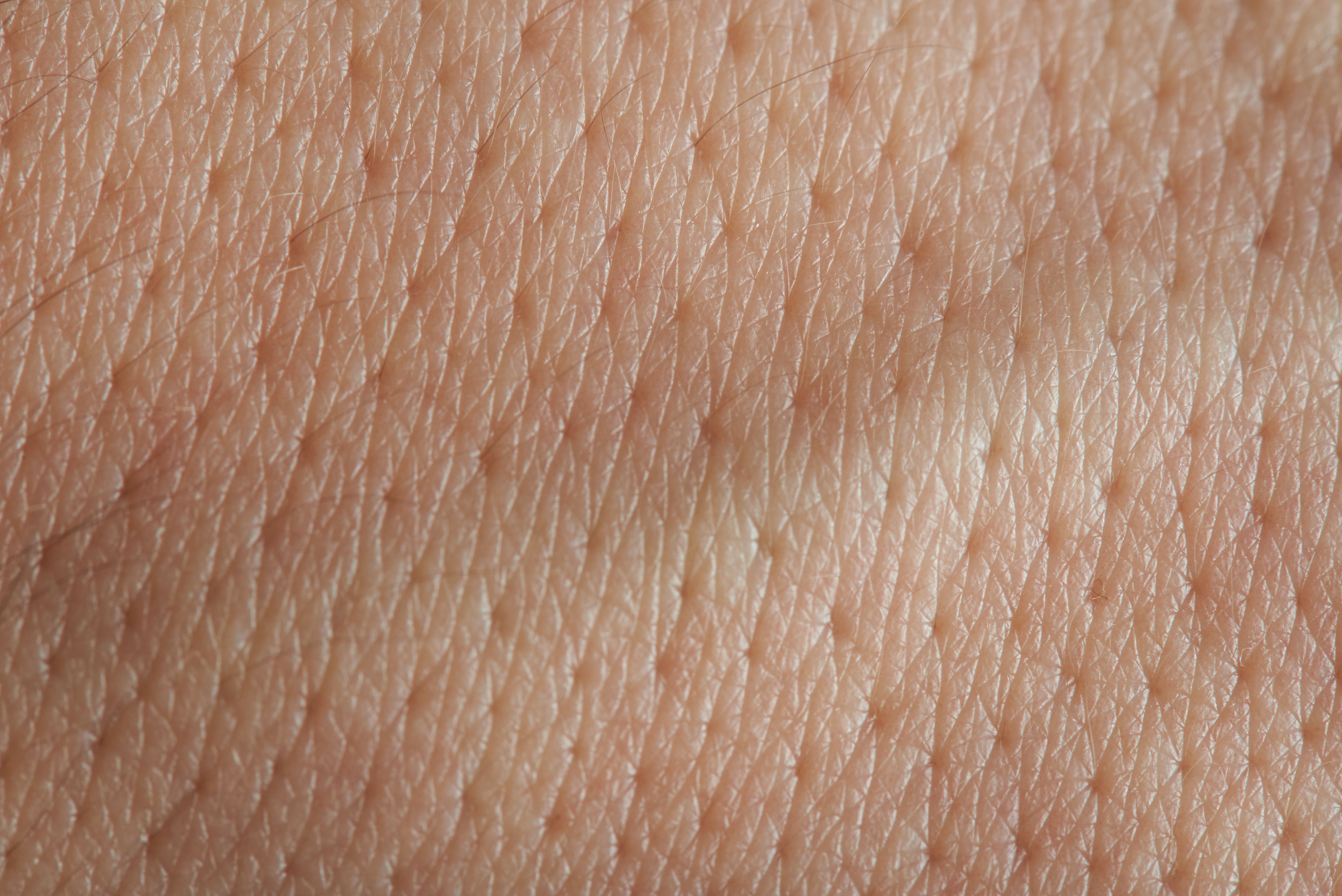
Lyme Disease: A Tick-Borne Infection
Lyme disease is a tick-borne infection that can cause a characteristic bull’s-eye rash, which may resemble ringworm. The rash, known as erythema migrans, typically starts as a small red spot that expands slowly over days, forming a circular pattern with a clear center. The rash may be accompanied by flu-like symptoms, such as fever, chills, headache, and fatigue.
If left untreated, Lyme disease can progress to more serious complications, including joint, heart, and nervous system problems. Prompt treatment with antibiotics is crucial to prevent these complications. Avoiding tick bites and promptly removing ticks are the best ways to prevent Lyme disease.
Psoriasis: A Chronic Autoimmune Condition
Psoriasis is a chronic autoimmune condition that can cause scaly, red patches on the skin. In some cases, these patches may have a circular or ring-like appearance, resembling ringworm. However, psoriasis is not caused by a fungal infection.
The patches of psoriasis are typically thicker and more persistent than those of ringworm. They may also be accompanied by other symptoms, such as joint pain, nail changes, and scalp involvement. Psoriasis is not contagious and cannot be spread through direct contact.

The exact cause of psoriasis is not fully understood, but it is thought to involve a combination of genetic and environmental factors. Flare-ups can be triggered by stress, certain medications, infections, and other factors. Treatment for psoriasis may involve topical creams, phototherapy, and systemic medications, depending on the severity of the condition.
Distinguishing Ringworm from Other Skin Conditions
Ringworm is a common fungal infection that can cause a characteristic circular rash with a clear center. However, there are several other skin conditions that can also cause similar-looking rashes, including pityriasis rosea, contact dermatitis, nummular eczema, granuloma annulare, Lyme disease, and psoriasis.
The key differences between these conditions and ringworm are the underlying causes, the appearance and progression of the rash, and the response to antifungal treatment. It’s important to seek medical attention if you have a persistent or unusual skin rash, as proper diagnosis and treatment are crucial for managing the condition effectively.
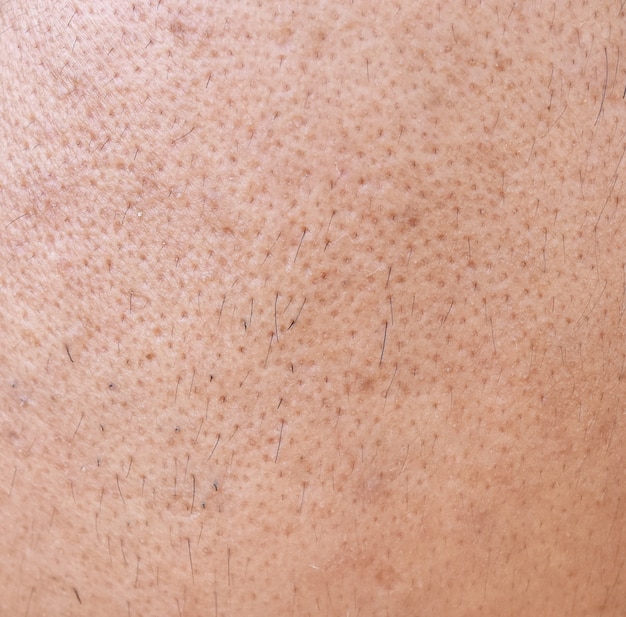
Red circle on the skin but not ringworm: Other causes
Many conditions can cause flaky patches or “rings” on the skin that could be confused with ringworm. They include pityriasis rosea, Lyme disease, nummular eczema, and psoriasis.
Ringworm is an itchy, round rash caused by a fungus called tinea. Usually, ringworm fades away after a person applies antifungal cream for 7–10 days. Other rashes may look like ringworm but will not respond to treatment with an antifungal cream.
The following photos show skin conditions that can cause scaly patches or rings on the skin and may resemble ringworm. Each rash type has a range of treatments and prevention strategies.
Share on PinterestPityriasis rosea on a lighter skin tone.
DermNet New Zealand
Pityriasis rosea is a common, mild skin rash that may last for 6–8 weeks and often clears up on its own.
The initial signs of infection include headache, fever, and cold-like symptoms. Soon after, a single scaly patch, about 2–10 centimeters (cm) in size, forms on the torso or neck.
When the first patch appears, it can be mistaken for ringworm. As the condition runs its course, the rash spreads out into larger blotches.
The rash is not painful but may be itchy. In those with darker skin tones, it may appear gray, dark brown, or black and can cause flat dark spots lasting several months. In those with lighter skin tones, it may appear pink or red but rarely forms scars.
The cause of pityriasis rosea is most likely the cold sore virus. But rosea sores are not contagious and cannot spread to others through physical contact. Also, pityriasis rosea can occur a couple of weeks after a COVID-19 infection.
Share on PinterestContact dermatitis on a darker skin tone.
Indian Journal of Dermatology, 61(1), 119. 2016. doi: 10.4103/0019-5154.174083Share on Pinterest Contact dermatitis on a lighter skin tone.
Nunyabb, 2006
Contact dermatitis is a form of eczema that results from something coming into contact with the skin.
As contact dermatitis can cause patches of thickened, scaly skin, it can be confused with ringworm. The patches may appear dark brown, purple, or gray on darker skin tones, while they usually appear bright red on lighter skin tones.
The patches may appear dark brown, purple, or gray on darker skin tones, while they usually appear bright red on lighter skin tones.
A person with contact dermatitis may be allergic to certain metals, such as nickel or cobalt, ingredients in cosmetics or soaps, or materials such as latex.
“Contact dermatitis” can also describe skin irritations such as diaper rash or cracked skin after too much handwashing or dishwashing. In severe cases, the area may bleed or ooze.
Share on PinterestNummular eczema on a darker skin tone.
Mohammad2018, 2018/Wikimedia Commons
Share on PinterestNummular eczema on a lighter skin tone.
Lester V. Bergman/Getty Images
Nummular eczema, also known as discoid eczema, is a disorder that causes coin-shaped patches of itchy, swollen skin to appear. This type of eczema occurs mainly on hands, arms, or legs and sometimes on the trunk.
Ringworm and nummular eczema both look similar because of a circular rash pattern. However, nummular eczema starts as tiny spots that turn into a rash. In contrast, ringworm spreads out with a clear center encircled by a discolored ring.
In contrast, ringworm spreads out with a clear center encircled by a discolored ring.
These spots measure 2–10 cm across, although they may be smaller. On lighter skin tones, they appear scaly and pink or red. The areas will look much darker or lighter on darker skin tones. Itching or burning sensations in these areas worsen at night and can be severe. Often, patches will flare up in the same spots on the body, and in serious cases, patches can leak fluid or crust over.
It is not clear what causes nummular eczema. Dry skin, extreme stress, sensitivity to a particular metal, and medication may all be triggers. Also, the symptoms worsen in cold, dry climates and in people with poor blood circulation.
Share on PinterestGranuloma annulare on a medium-dark skin tone.
Jesus Hernandez
Granuloma annulare is a rare, chronic skin disorder that is not contagious or cancerous. Although the affected skin looks like ringworm, the center of the rash remains a solid color.
In this condition, a raised round rash forms with a distinctive border of small, firm bumps. These bumps grow into a ring and mainly develop on the feet, legs, hands, or arms. The rash can appear deeper in color on darker skin, with a purplish-red edge around the outside. On lighter skin tones, the site may be yellow, red, or flesh-colored.
These bumps grow into a ring and mainly develop on the feet, legs, hands, or arms. The rash can appear deeper in color on darker skin, with a purplish-red edge around the outside. On lighter skin tones, the site may be yellow, red, or flesh-colored.
The rash is not usually painful or itchy and will often fade without treatment. There are many types of granuloma annulare, but the most common type is localized, primarily affecting children.
Experts are not sure exactly what causes granuloma annulare, but it may involve:
- injury to the skin with a bug bite, tattoo, or stitches
- taking certain medications, such as calcium channel blockers or ACE inhibitors
- viral infections, including shingles or HIV
- specific health issues, such as diabetes or thyroid disorders
Share on PinterestPsoriasis on a lighter skin tone.
Egor_Kulinich/Shutterstock
Share on PinterestPsoriasis on a darker skin tone.
Medicshots/Alamy Stock Photo
Psoriasis is a common long-term skin condition that develops when the body produces skin cells too quickly. As a result, the cells pile up, forming visible patches on the skin’s surface.
As a result, the cells pile up, forming visible patches on the skin’s surface.
In the beginning, psoriasis and ringworm look similar in color and shape. Yet, psoriasis does not go away with antifungal cream and worsens over time.
Psoriasis can form anywhere on the body, but it typically appears on the elbows, knees, scalp, and lower back. Patches will appear rose-colored on darker skin and dark red or purple on lighter skin.
In addition, a crusty white, yellow, or silvery layer of skin can form over the patches, regardless of the skin tint. For some people, the spots can grow into the joints and nails. In severe cases, people may have difficulty walking or using their hands or arms.
Symptoms include itching, soreness, or a burning sensation at the site. Skin cracks and bleeding can occur in repeated flares, putting the area at risk for infection.
Experts believe psoriasis comes from issues with the immune system causing the body to attack healthy skin cells. It is not contagious, but it can run in families — though it is not always hereditary. The following factors can trigger psoriasis:
It is not contagious, but it can run in families — though it is not always hereditary. The following factors can trigger psoriasis:
- hormonal changes
- excessive alcohol intake
- stress or anxiety
- injuries to the skin, including insect bites and sunburn
- infections such as strep throat
- certain medications, such as anti-inflammatory drugs or high blood pressure medications
Depending on the type of psoriasis, the patches may heal and not return for months. However, most cases will require medication for long-term management.
Share on PinterestErythema migrans is a rash usually associated with Lyme disease, which is spread by tick bites.
CDC/James Gathany, public domain, via Wikimedia Commons
Share on Pinterest Erythema migrans on a darker skin tone.
VisualDx
Lyme disease is a bacterial infection caused by the bite of a black-legged deer tick.
People with Lyme disease develop a circular bull’s-eye rash around the bite mark. This “target” rash can sometimes be confused with ringworm.
This “target” rash can sometimes be confused with ringworm.
Up to 70% of people in the initial stage of Lyme disease will have a rash appear within 5–7 days after the bite. The area may burn, itch, or feel hot to the touch.
The center of the rash may contain a bite mark and look like a bruise. On lighter skin tones, the spot will be bright red. However, on darker skin tones, a pinkish-brown ring may appear around a maroon-red area. Also, the bull’s-eye rash may be harder to see on those with darker skin.
With or without rash, Lyme disease can cause flu-like symptoms, such as a fever, muscle aches, and fatigue. If left untreated, the symptoms can progress into pain and swelling in the joints, numbness in the hands or feet, and heart or brain damage.
Not all tick bites progress to Lyme disease, but a person should consult their healthcare professional if bitten.
Share on PinterestLupus rash on a darker skin tone.
DermNet New Zealand
Share on PinterestLupus rash on a lighter skin tone.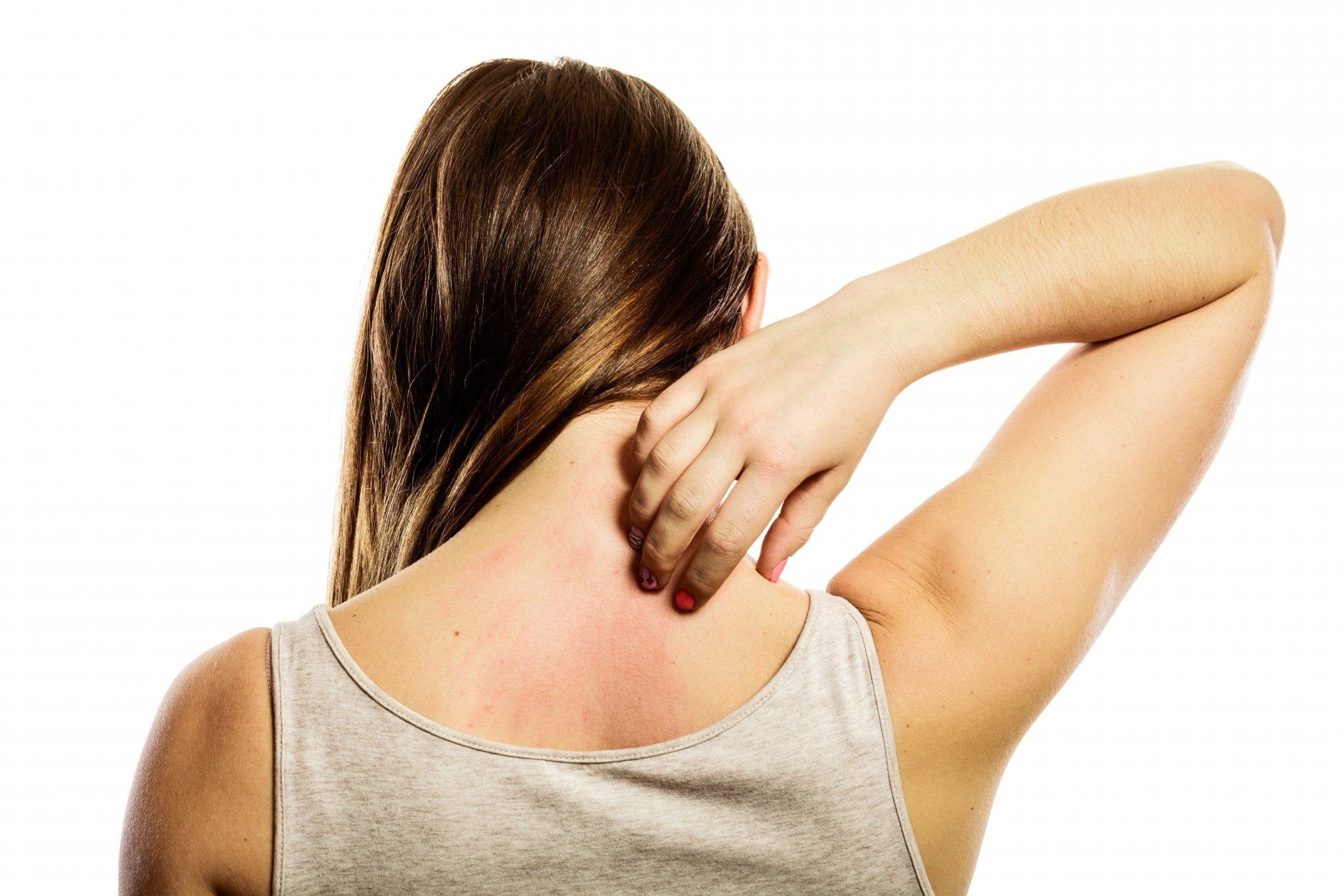
Doktorinternet, CC BY-SA 4.0, via Wikimedia Commons
Lupus is a chronic inflammatory disease that can cause a scaly rash to form on the upper body and face. During a first-time flare, this rash can resemble ringworm.
Since skin symptoms of lupus form on skin exposed to sunlight, a person with lighter skin may develop a pink spot with a dark-brown border on their face, neck, arms, or hands. On a person with darker skin, it may be dark black or light pink with a maroon edge. Lupus flares may form scars as they heal.
A person with lupus may also experience:
- fatigue
- joint weakness
- flu-like symptoms
The following factors may trigger flare-ups:
- exposure to sunlight
- stress, excess work, or lack of sleep
- infection
- injury
The symptoms may flare up for a few weeks or longer before improving. Since lupus is a chronic condition, flares can happen again in the same spots or in new areas.
The proper treatment approach for a red, circular rash depends on the cause, and an accurate diagnosis is key.
Depending on the severity of the rash and any other symptoms, a person may benefit from a combination of the following treatments and home care strategies:
Avoiding triggers
Conditions such as contact dermatitis, nummular eczema, psoriasis, and lupus can occur or flare up in response to triggers. Identifying and avoiding specific triggers can help keep the symptoms at bay.
Emollients
Emollients are moisturizing treatments that help soothe and hydrate the skin, reduce itchiness, and prevent inflammation. People with contact dermatitis, nummular eczema, and psoriasis benefit most from these products.
They come as lotions, creams, ointments, or soap substitutes. In most cases, a person can purchase emollients from a pharmacy without a prescription.
However, it is essential to know that emollients containing tree nuts may worsen certain skin conditions. A doctor or pharmacist can help choose a safe product.
Topical treatments and drugs
Professional treatment for these conditions often starts with an ointment or cream, which may contain steroids or antibiotics. A healthcare professional may also recommend steroid injections or tablets, oral antibiotics, or anti-allergy medications.
A healthcare professional may also recommend steroid injections or tablets, oral antibiotics, or anti-allergy medications.
However, for Lyme disease, antibiotic tablets or injections are the first-line treatment.
For psoriasis, a wide range of medicated creams include:
- coal tar, a thick oil, to reduce itchiness and swelling
- synthetic vitamin A or D creams to slow skin cell production
- calcineurin inhibitor creams, such as pimecrolimus or tacrolimus, for off-label use to suppress the immune system
Even after a person uses topical treatment and steroids, severe cases of psoriasis may require an oral or injectable biologic drug.
For lupus, doctors may prescribe calcineurin inhibitor creams, chemotherapy, or malaria treatment.
Other therapies
Some forms of light therapy, such as ultraviolet light therapy, may help with pityriasis rosea, granuloma annulare, nummular eczema, and psoriasis.
Cryotherapy, which involves freezing areas of skin with liquid nitrogen, can help control granuloma annulare.
If an unexplained rash lasts longer than a few weeks, reach out to a doctor, such as a dermatologist.
It is essential to receive professional care if the rash:
- appears over the whole body
- is painful
- seems infected
- produces blisters, especially near the eyes, inside the mouth, or near the genitals
- occurs with any fatigue or joint pain
The American Academy of Dermatology recommends seeking emergency care if a rash:
- accompanies a fever
- accompanies difficulty breathing
- appears suddenly and spreads quickly
Rashes that are circular and scaly do not always indicate ringworm. Instead, they can result from several common health issues, some more serious than others.
Different treatments are available, and the best approach depends on the rash’s cause and severity.
Anyone with an unexplained rash should receive a professional diagnosis. If a rash appears and spreads quickly, or if it occurs with a fever or difficulty breathing, contact emergency services.
Red circle on the skin but not ringworm: Other causes
Many conditions can cause flaky patches or “rings” on the skin that could be confused with ringworm. They include pityriasis rosea, Lyme disease, nummular eczema, and psoriasis.
Ringworm is an itchy, round rash caused by a fungus called tinea. Usually, ringworm fades away after a person applies antifungal cream for 7–10 days. Other rashes may look like ringworm but will not respond to treatment with an antifungal cream.
The following photos show skin conditions that can cause scaly patches or rings on the skin and may resemble ringworm. Each rash type has a range of treatments and prevention strategies.
Share on PinterestPityriasis rosea on a lighter skin tone.
DermNet New Zealand
Pityriasis rosea is a common, mild skin rash that may last for 6–8 weeks and often clears up on its own.
The initial signs of infection include headache, fever, and cold-like symptoms. Soon after, a single scaly patch, about 2–10 centimeters (cm) in size, forms on the torso or neck.
When the first patch appears, it can be mistaken for ringworm. As the condition runs its course, the rash spreads out into larger blotches.
The rash is not painful but may be itchy. In those with darker skin tones, it may appear gray, dark brown, or black and can cause flat dark spots lasting several months. In those with lighter skin tones, it may appear pink or red but rarely forms scars.
The cause of pityriasis rosea is most likely the cold sore virus. But rosea sores are not contagious and cannot spread to others through physical contact. Also, pityriasis rosea can occur a couple of weeks after a COVID-19 infection.
Share on PinterestContact dermatitis on a darker skin tone.
Indian Journal of Dermatology, 61(1), 119. 2016. doi: 10.4103/0019-5154.174083Share on Pinterest Contact dermatitis on a lighter skin tone.
Nunyabb, 2006
Contact dermatitis is a form of eczema that results from something coming into contact with the skin.
As contact dermatitis can cause patches of thickened, scaly skin, it can be confused with ringworm. The patches may appear dark brown, purple, or gray on darker skin tones, while they usually appear bright red on lighter skin tones.
The patches may appear dark brown, purple, or gray on darker skin tones, while they usually appear bright red on lighter skin tones.
A person with contact dermatitis may be allergic to certain metals, such as nickel or cobalt, ingredients in cosmetics or soaps, or materials such as latex.
“Contact dermatitis” can also describe skin irritations such as diaper rash or cracked skin after too much handwashing or dishwashing. In severe cases, the area may bleed or ooze.
Share on PinterestNummular eczema on a darker skin tone.
Mohammad2018, 2018/Wikimedia Commons
Share on PinterestNummular eczema on a lighter skin tone.
Lester V. Bergman/Getty Images
Nummular eczema, also known as discoid eczema, is a disorder that causes coin-shaped patches of itchy, swollen skin to appear. This type of eczema occurs mainly on hands, arms, or legs and sometimes on the trunk.
Ringworm and nummular eczema both look similar because of a circular rash pattern. However, nummular eczema starts as tiny spots that turn into a rash.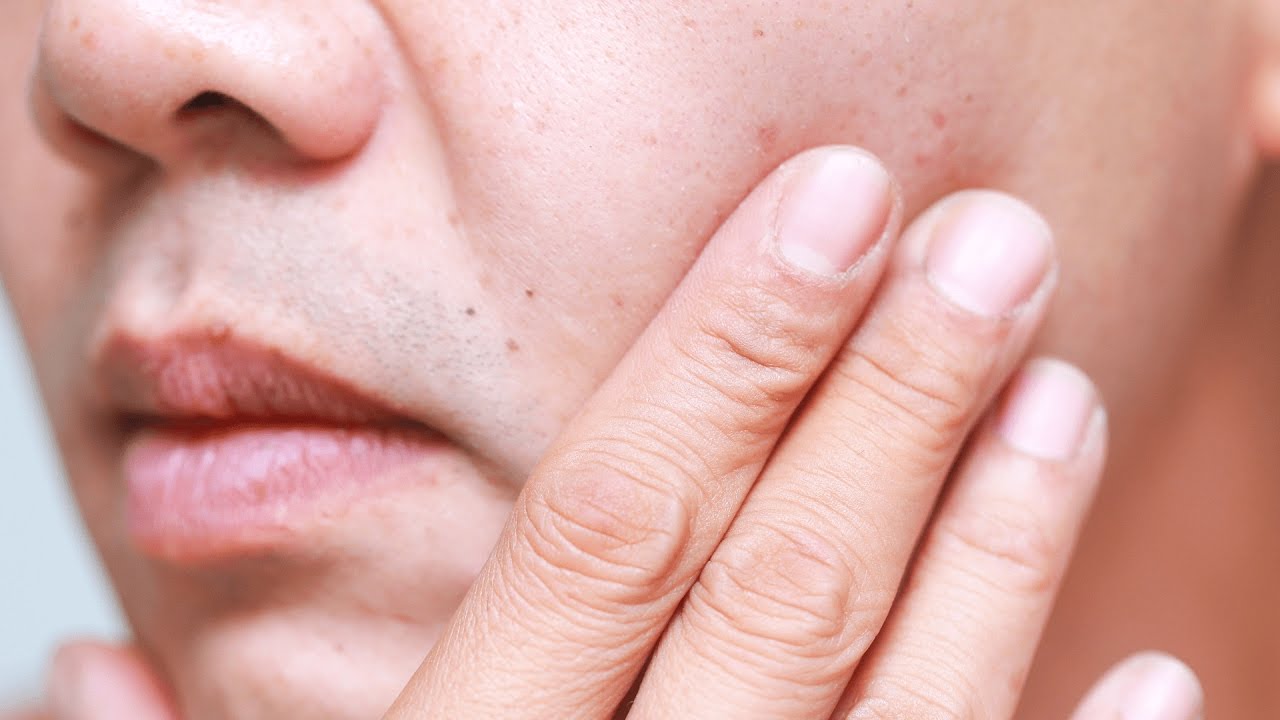 In contrast, ringworm spreads out with a clear center encircled by a discolored ring.
In contrast, ringworm spreads out with a clear center encircled by a discolored ring.
These spots measure 2–10 cm across, although they may be smaller. On lighter skin tones, they appear scaly and pink or red. The areas will look much darker or lighter on darker skin tones. Itching or burning sensations in these areas worsen at night and can be severe. Often, patches will flare up in the same spots on the body, and in serious cases, patches can leak fluid or crust over.
It is not clear what causes nummular eczema. Dry skin, extreme stress, sensitivity to a particular metal, and medication may all be triggers. Also, the symptoms worsen in cold, dry climates and in people with poor blood circulation.
Share on PinterestGranuloma annulare on a medium-dark skin tone.
Jesus Hernandez
Granuloma annulare is a rare, chronic skin disorder that is not contagious or cancerous. Although the affected skin looks like ringworm, the center of the rash remains a solid color.
In this condition, a raised round rash forms with a distinctive border of small, firm bumps. These bumps grow into a ring and mainly develop on the feet, legs, hands, or arms. The rash can appear deeper in color on darker skin, with a purplish-red edge around the outside. On lighter skin tones, the site may be yellow, red, or flesh-colored.
These bumps grow into a ring and mainly develop on the feet, legs, hands, or arms. The rash can appear deeper in color on darker skin, with a purplish-red edge around the outside. On lighter skin tones, the site may be yellow, red, or flesh-colored.
The rash is not usually painful or itchy and will often fade without treatment. There are many types of granuloma annulare, but the most common type is localized, primarily affecting children.
Experts are not sure exactly what causes granuloma annulare, but it may involve:
- injury to the skin with a bug bite, tattoo, or stitches
- taking certain medications, such as calcium channel blockers or ACE inhibitors
- viral infections, including shingles or HIV
- specific health issues, such as diabetes or thyroid disorders
Share on PinterestPsoriasis on a lighter skin tone.
Egor_Kulinich/Shutterstock
Share on PinterestPsoriasis on a darker skin tone.
Medicshots/Alamy Stock Photo
Psoriasis is a common long-term skin condition that develops when the body produces skin cells too quickly. As a result, the cells pile up, forming visible patches on the skin’s surface.
As a result, the cells pile up, forming visible patches on the skin’s surface.
In the beginning, psoriasis and ringworm look similar in color and shape. Yet, psoriasis does not go away with antifungal cream and worsens over time.
Psoriasis can form anywhere on the body, but it typically appears on the elbows, knees, scalp, and lower back. Patches will appear rose-colored on darker skin and dark red or purple on lighter skin.
In addition, a crusty white, yellow, or silvery layer of skin can form over the patches, regardless of the skin tint. For some people, the spots can grow into the joints and nails. In severe cases, people may have difficulty walking or using their hands or arms.
Symptoms include itching, soreness, or a burning sensation at the site. Skin cracks and bleeding can occur in repeated flares, putting the area at risk for infection.
Experts believe psoriasis comes from issues with the immune system causing the body to attack healthy skin cells. It is not contagious, but it can run in families — though it is not always hereditary. The following factors can trigger psoriasis:
It is not contagious, but it can run in families — though it is not always hereditary. The following factors can trigger psoriasis:
- hormonal changes
- excessive alcohol intake
- stress or anxiety
- injuries to the skin, including insect bites and sunburn
- infections such as strep throat
- certain medications, such as anti-inflammatory drugs or high blood pressure medications
Depending on the type of psoriasis, the patches may heal and not return for months. However, most cases will require medication for long-term management.
Share on PinterestErythema migrans is a rash usually associated with Lyme disease, which is spread by tick bites.
CDC/James Gathany, public domain, via Wikimedia Commons
Share on Pinterest Erythema migrans on a darker skin tone.
VisualDx
Lyme disease is a bacterial infection caused by the bite of a black-legged deer tick.
People with Lyme disease develop a circular bull’s-eye rash around the bite mark. This “target” rash can sometimes be confused with ringworm.
This “target” rash can sometimes be confused with ringworm.
Up to 70% of people in the initial stage of Lyme disease will have a rash appear within 5–7 days after the bite. The area may burn, itch, or feel hot to the touch.
The center of the rash may contain a bite mark and look like a bruise. On lighter skin tones, the spot will be bright red. However, on darker skin tones, a pinkish-brown ring may appear around a maroon-red area. Also, the bull’s-eye rash may be harder to see on those with darker skin.
With or without rash, Lyme disease can cause flu-like symptoms, such as a fever, muscle aches, and fatigue. If left untreated, the symptoms can progress into pain and swelling in the joints, numbness in the hands or feet, and heart or brain damage.
Not all tick bites progress to Lyme disease, but a person should consult their healthcare professional if bitten.
Share on PinterestLupus rash on a darker skin tone.
DermNet New Zealand
Share on PinterestLupus rash on a lighter skin tone.
Doktorinternet, CC BY-SA 4.0, via Wikimedia Commons
Lupus is a chronic inflammatory disease that can cause a scaly rash to form on the upper body and face. During a first-time flare, this rash can resemble ringworm.
Since skin symptoms of lupus form on skin exposed to sunlight, a person with lighter skin may develop a pink spot with a dark-brown border on their face, neck, arms, or hands. On a person with darker skin, it may be dark black or light pink with a maroon edge. Lupus flares may form scars as they heal.
A person with lupus may also experience:
- fatigue
- joint weakness
- flu-like symptoms
The following factors may trigger flare-ups:
- exposure to sunlight
- stress, excess work, or lack of sleep
- infection
- injury
The symptoms may flare up for a few weeks or longer before improving. Since lupus is a chronic condition, flares can happen again in the same spots or in new areas.
The proper treatment approach for a red, circular rash depends on the cause, and an accurate diagnosis is key.
Depending on the severity of the rash and any other symptoms, a person may benefit from a combination of the following treatments and home care strategies:
Avoiding triggers
Conditions such as contact dermatitis, nummular eczema, psoriasis, and lupus can occur or flare up in response to triggers. Identifying and avoiding specific triggers can help keep the symptoms at bay.
Emollients
Emollients are moisturizing treatments that help soothe and hydrate the skin, reduce itchiness, and prevent inflammation. People with contact dermatitis, nummular eczema, and psoriasis benefit most from these products.
They come as lotions, creams, ointments, or soap substitutes. In most cases, a person can purchase emollients from a pharmacy without a prescription.
However, it is essential to know that emollients containing tree nuts may worsen certain skin conditions. A doctor or pharmacist can help choose a safe product.
Topical treatments and drugs
Professional treatment for these conditions often starts with an ointment or cream, which may contain steroids or antibiotics. A healthcare professional may also recommend steroid injections or tablets, oral antibiotics, or anti-allergy medications.
A healthcare professional may also recommend steroid injections or tablets, oral antibiotics, or anti-allergy medications.
However, for Lyme disease, antibiotic tablets or injections are the first-line treatment.
For psoriasis, a wide range of medicated creams include:
- coal tar, a thick oil, to reduce itchiness and swelling
- synthetic vitamin A or D creams to slow skin cell production
- calcineurin inhibitor creams, such as pimecrolimus or tacrolimus, for off-label use to suppress the immune system
Even after a person uses topical treatment and steroids, severe cases of psoriasis may require an oral or injectable biologic drug.
For lupus, doctors may prescribe calcineurin inhibitor creams, chemotherapy, or malaria treatment.
Other therapies
Some forms of light therapy, such as ultraviolet light therapy, may help with pityriasis rosea, granuloma annulare, nummular eczema, and psoriasis.
Cryotherapy, which involves freezing areas of skin with liquid nitrogen, can help control granuloma annulare.
If an unexplained rash lasts longer than a few weeks, reach out to a doctor, such as a dermatologist.
It is essential to receive professional care if the rash:
- appears over the whole body
- is painful
- seems infected
- produces blisters, especially near the eyes, inside the mouth, or near the genitals
- occurs with any fatigue or joint pain
The American Academy of Dermatology recommends seeking emergency care if a rash:
- accompanies a fever
- accompanies difficulty breathing
- appears suddenly and spreads quickly
Rashes that are circular and scaly do not always indicate ringworm. Instead, they can result from several common health issues, some more serious than others.
Different treatments are available, and the best approach depends on the rash’s cause and severity.
Anyone with an unexplained rash should receive a professional diagnosis. If a rash appears and spreads quickly, or if it occurs with a fever or difficulty breathing, contact emergency services.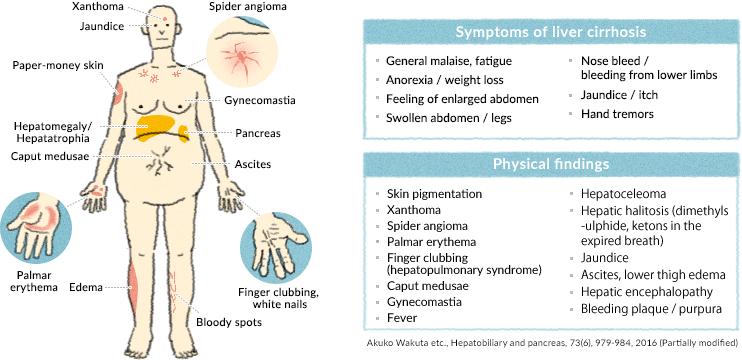
Erythema annulare: symptoms, treatment, diagnosis of the disease
Erythema annulare is a multiform lesion of the skin, a characteristic feature of which is the appearance of ring-shaped spots and rashes on the skin. The color of the skin of the affected areas changes and becomes red, hot pink or bluish. Depending on the causes of the disease, edema, local fever and other manifestations of the disease can be observed. A change in skin color occurs due to the expansion of the lumen of the blood capillaries penetrating the connective tissue, and the blood stagnation associated with it.
Varieties of pathology
Doctors distinguish several types of annular erythema, depending on the causes of the disease:
- Darya centrifugal erythema – most often affecting middle-aged men, less often – children and the elderly, related to infectious-allergic manifestations;
- migratory – a disease of an infectious nature resulting from the bite of a tick infected with Borrelia;
- rheumatic, or annular erythema, is one of the symptoms that accompany rheumatism, characteristic of children and adolescents.

According to external signs, ring erythema can occur:
- in scaly form – with desquamation of dead skin along the edges or the entire surface of the spots;
- in vesicular form – with the appearance of small fluid-filled vesicles along the edge or the entire surface of the spots;
- in a garland-like form – with the mildest course, which is characterized by pale pink spots arranged in chains or garlands and disappearing after a few days;
- in microgarland-like form – with small spots, up to 1 cm in diameter, sometimes accompanied by peeling or blistering, with a long course.
The medical literature also mentions other, very rare types of annular erythema – telangiectatic, purpuric or indurated.
Symptoms
The main manifestation of the disease is the appearance on the skin of characteristic rashes in the form of irregular rings with a bright border raised above the surface of the skin. With centrifugal erythema of Dardieu, they appear, as a rule, on areas of the skin, usually covered with clothing – on the back, abdomen and chest, forearms. Erythema annulare after a midge bite is a single spot that spreads from the site of infection, and in its final form it can reach 20-25 cm in diameter. The spots may be accompanied by itching or burning. In the rheumatic form of the pathology, there are no unpleasant sensations.
With centrifugal erythema of Dardieu, they appear, as a rule, on areas of the skin, usually covered with clothing – on the back, abdomen and chest, forearms. Erythema annulare after a midge bite is a single spot that spreads from the site of infection, and in its final form it can reach 20-25 cm in diameter. The spots may be accompanied by itching or burning. In the rheumatic form of the pathology, there are no unpleasant sensations.
Causes of disease
There are many diseases and conditions that can cause erythema annulare, since it is not an independent disease and always occurs against the background of some pathological process. Skin manifestations most often develop against the background of:
- accumulation of toxins in the body;
- rheumatism;
- fungal, viral or bacterial infections;
- chronic inflammatory diseases;
- dysfunctions of the endocrine gland;
- tuberculosis;
- borreliosis;
- reduce the protective function of the immune system;
- allergic reaction;
- cancer;
- helminthic infestation;
- taking certain medications.

In addition, in many cases, erythema annulare Darier occurs for no apparent reason in perfectly healthy people.
Diagnostics
When erythema annulare appears, the diagnosis is based on dermatological examination data and history taking. The main task of the examination is to determine the cause that caused pathological changes in the skin. For this, the patient is prescribed:
- skin scraping test for fungus;
- clinical blood test;
- testing for treponematosis;
- skin biopsy for histological analysis;
- serological examination of blood;
- allergy tests.
Based on the results obtained, specific studies can be prescribed to determine the state of certain organs and identify the underlying disease.
Treatment
The main principle of the treatment of erythema annulare is to stop the action of the factor that provokes the pathology. Depending on the results of the diagnosis, the patient may be prescribed drugs for oral administration:
- antibiotics, antivirals for the treatment of infection;
- antiallergic and hyposensitizing agents;
- cytostatics;
- anthelmintics;
- glucocorticoids.

In addition, external agents may be useful – antihistamine, steroid or zinc-containing ointments to reduce discomfort and reduce symptoms. With erythema annulare, clinical recommendations may include limiting certain foods that cause an allergic reaction: confectionery, mushrooms, nuts, canned food, smoked meats, citrus fruits, etc. You should be prepared for the fact that the treatment process will last several months, as well as the possibility relapses.
Diagnostics and treatment of annular erythema in Moscow
The clinic of JSC “Medicina” conducts effective diagnostics and treatment of erythema annulare in Moscow. We have a powerful laboratory and diagnostic base that allows us to perform the most modern and informative types of analyzes and diagnostic procedures. Consultations are conducted by experienced doctors of the highest category. Make an appointment online or by phone at a convenient time for you.
Questions and answers
Which doctor treats erythema annulare?
If you suspect an annular erythema, you should immediately contact a dermatologist who will conduct an appropriate diagnosis and prescribe treatment based on its results. In the future, you may need to consult an allergist, rheumatologist, oncologist or other specialists, depending on the cause that caused the appearance of red spots on the skin.
In the future, you may need to consult an allergist, rheumatologist, oncologist or other specialists, depending on the cause that caused the appearance of red spots on the skin.
Ring erythema – is it contagious?
No, this pathology is not transmitted to other people even in cases where it is caused by an infectious disease.
How dangerous is erythema annulare?
By itself, ring erythema does not pose a great danger. With timely started adequate treatment, the patient is guaranteed to recover. However, it should not be neglected: if left untreated, the disease becomes chronic with constant relapses. Skin manifestations indicate the presence of health problems, therefore, when they appear, it is necessary to contact a qualified dermatologist without delay.
causes of spots on the legs, head, hands
Publication: 09/13/2022
Change: 04/12/2023
Many doctors consider the skin to be an indicator of health, as it signals the onset of pathological processes within the body. Therefore, even such a common symptom as red spots indicates various diseases. Possible causes include skin diseases, allergic reactions, infectious pathologies or autoimmune processes. However, in some cases, red spots on the skin can be a cosmetic defect, which is why it is so important to understand the causes of the appearance and choose the right method of treatment.
Therefore, even such a common symptom as red spots indicates various diseases. Possible causes include skin diseases, allergic reactions, infectious pathologies or autoimmune processes. However, in some cases, red spots on the skin can be a cosmetic defect, which is why it is so important to understand the causes of the appearance and choose the right method of treatment.
Author:
Ibraev Anatoly Tomasovich
Head of the Department of Cosmetology and Laser Technologies. Dermatologist-cosmetologist
Work experience: 16 years
Important!
The information in this article should not be used for self-diagnosis or self-treatment. For staging
correct diagnosis and treatment should always consult a doctor.
Types of red spots on the skin
A macula or macula is a localized discoloration of the skin that is either inflammatory or non-inflammatory in nature:
- Inflammatory (vascular) formations appear as a result of the expansion of the blood vessels of the papillary dermis.
 In this case, bright red or red-bluish rashes appear, which may lighten with time. Spots of small diameter (up to 20-25 mm) are called roseola, in other cases we are talking about erythema. If all skin integuments are included in the pathological process, erythroderma occurs.
In this case, bright red or red-bluish rashes appear, which may lighten with time. Spots of small diameter (up to 20-25 mm) are called roseola, in other cases we are talking about erythema. If all skin integuments are included in the pathological process, erythroderma occurs. - As a result of hemorrhages, hemorrhagic spots appear. Initially they have a purple-red tint, but over time they turn yellow and disappear. The appearance of such formations is preceded by tissue injury.
- Non-inflammatory spots are the result of hemorrhage, disturbances in the content of melanin in cells or the introduction of dyes into the skin. In some cases (for example, with vasodilation) they can also have a red or red-cyanotic tint.
A cosmetic defect in the form of red spots occurs in people of any gender and age, often spots are found even in infants. At the same time, such rashes have a different appearance: they differ not only in shape, size and quantity, but also in shade.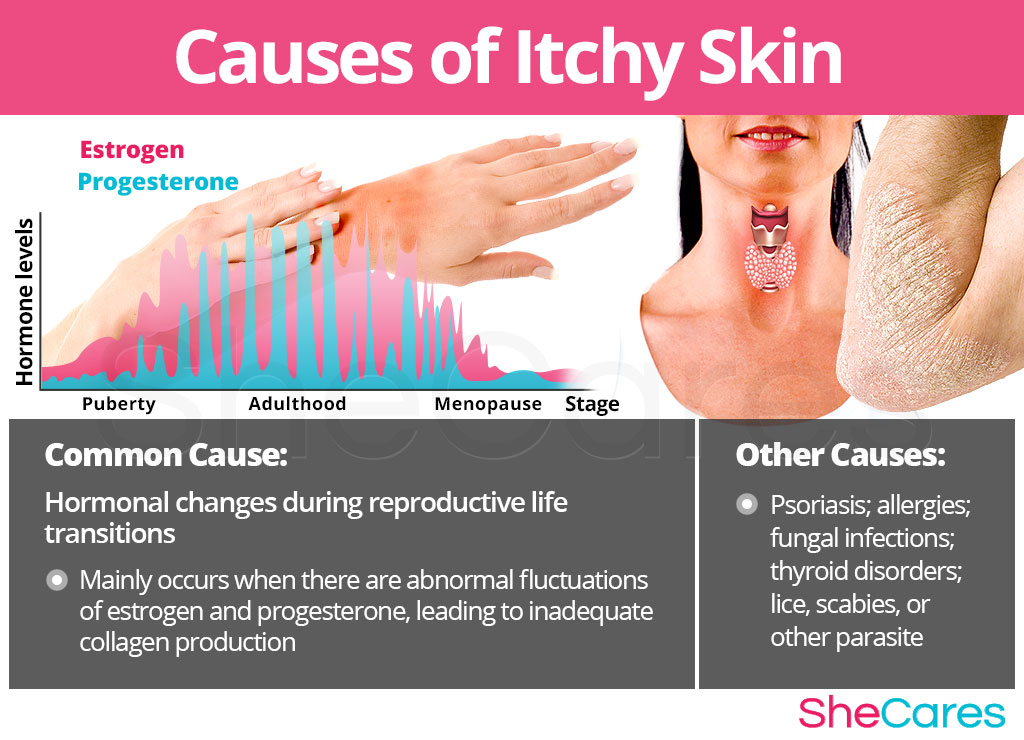 Conventionally, red spots are divided into the following groups:
Conventionally, red spots are divided into the following groups:
- flat and convex;
- swollen (inflamed) and not inflamed;
- smooth and rough;
- wet and dry;
- with a clear outline and blurry;
- dark purple or reddish (pink).
The localization of spots also differs. In rare cases, they appear on almost all parts of the body. More often you can find an option when the rashes are concentrated on a separate area: face, neck, arms, back, genitals.
Symptoms and causes
We have already noted that there are a huge number of possible reasons for the appearance of such formations. More often we are talking about the development of skin or infectious diseases, but sometimes spots are the result of mental disorders or other malfunctions in the body. The following factors can provoke the appearance of rashes:0003
- Diseases of the heart or blood vessels.
- Allergic reactions.

- Autoimmune pathologies.
- Dermatological diseases.
- Dysfunction of internal organs.
- Parasitic and bacterial infections.
- Some insect bites.
- Oncological diseases.
- Malnutrition, disturbances in the digestive tract.
- Poor ecological situation in the place of residence.
- Frequent stress and anxiety.
Because there are many causes for red rashes, symptoms will vary from case to case. Spots can be all over the body or only in certain areas, itching, burning or peeling are additionally manifested, but sometimes they may not be. It is impossible to talk about the presence of a single clinical picture, so a separate diagnosis will be required.
If we talk about the most common conditions that provoke the appearance of red spots, then it is worth highlighting the following pathologies:
Allergy . The external manifestation of this problem is itchy reddish spots of various sizes and shapes. Their appearance is accompanied by swelling and peeling of the skin. Some patients experience general malaise, weakness, chills. As a rule, symptoms appear immediately after contact with the allergen: they can be certain products, cosmetics, medicines, plants. In rare cases, the appearance of rashes is associated with exposure to low temperatures.
Their appearance is accompanied by swelling and peeling of the skin. Some patients experience general malaise, weakness, chills. As a rule, symptoms appear immediately after contact with the allergen: they can be certain products, cosmetics, medicines, plants. In rare cases, the appearance of rashes is associated with exposure to low temperatures.
Allergies often show up as pink spots where skin contacts clothing, which may indicate the use of inappropriate detergent or personal care products.
Rubella . Red small spots on the skin can be the result of rubella measles. They occur throughout the body, but the maximum localization is noted on the back, face and neck. As a rule, the formations disappear within a few days, but only with treatment.
Scarlet fever . This infectious disease is caused by group A streptococcus. One of the symptoms of the disease is small spots all over the body, the size of which does not exceed a few millimeters.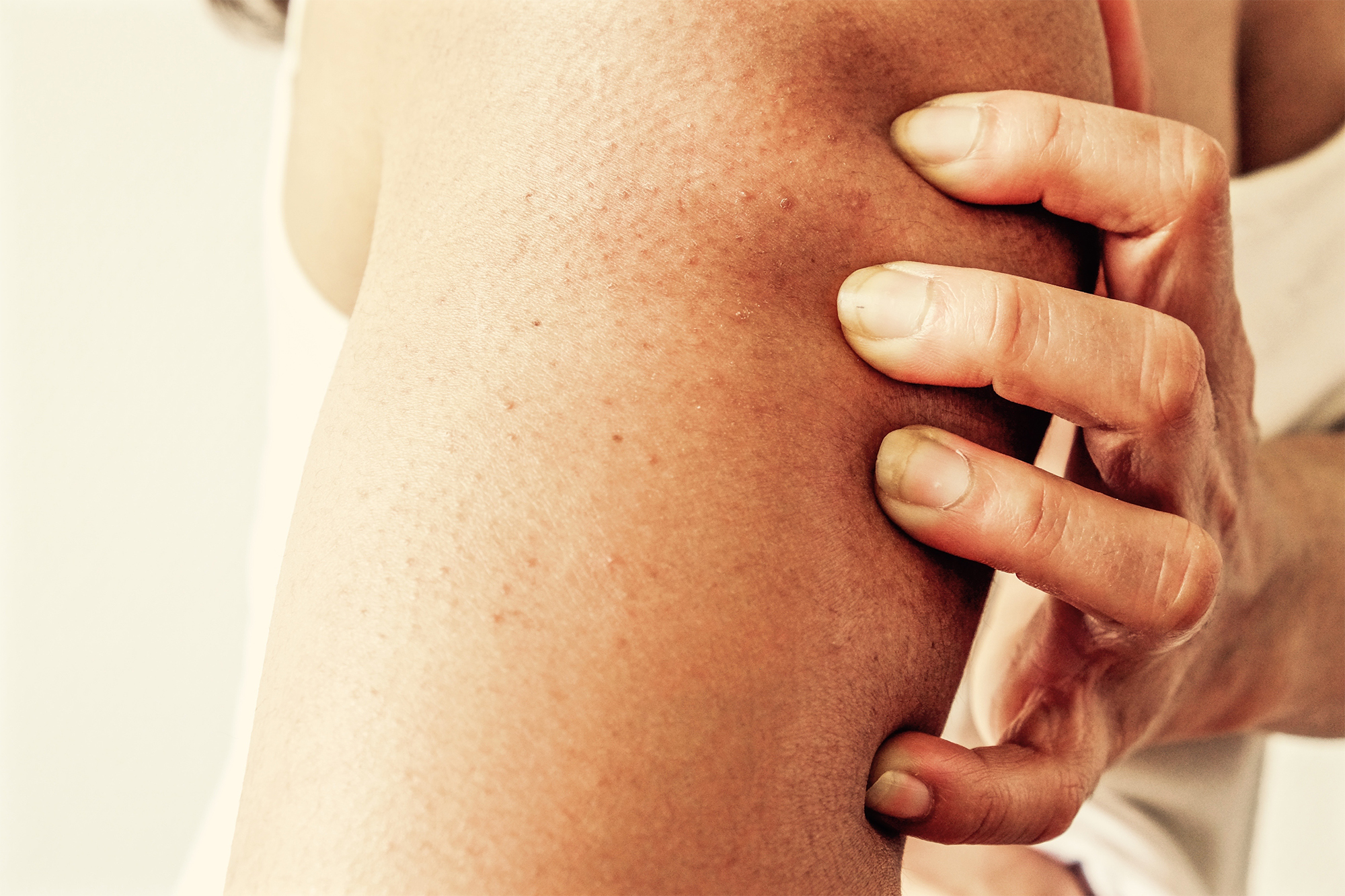 Rashes appear after the onset of a sore throat, more often located on the lower abdomen or in the groin area. The skin appears reddened and inflamed.
Rashes appear after the onset of a sore throat, more often located on the lower abdomen or in the groin area. The skin appears reddened and inflamed.
Pityriasis rosea Gibert . This pathology is most often encountered by patients with weakened immunity. For this reason, the risk of disease in spring and autumn increases significantly. Lichen may appear as pink, reddish or crimson spots up to 5 cm in diameter. Outwardly, such formations resemble plaques. First, one spot appears, after 5–7 days, others, smaller in size, are found near it. At the same time, peeling of the skin may appear, less often – swelling of the tissues is observed.
Erythema . This condition is characterized by reddening of the skin, which occurs after the activation of blood circulation and the expansion of capillaries. As a rule, this is the result of heavy physical exertion or excitement. Often, redness is observed on the face after massage, peeling or masks. The spots are relatively large, but do not require treatment, as they quickly disappear on their own.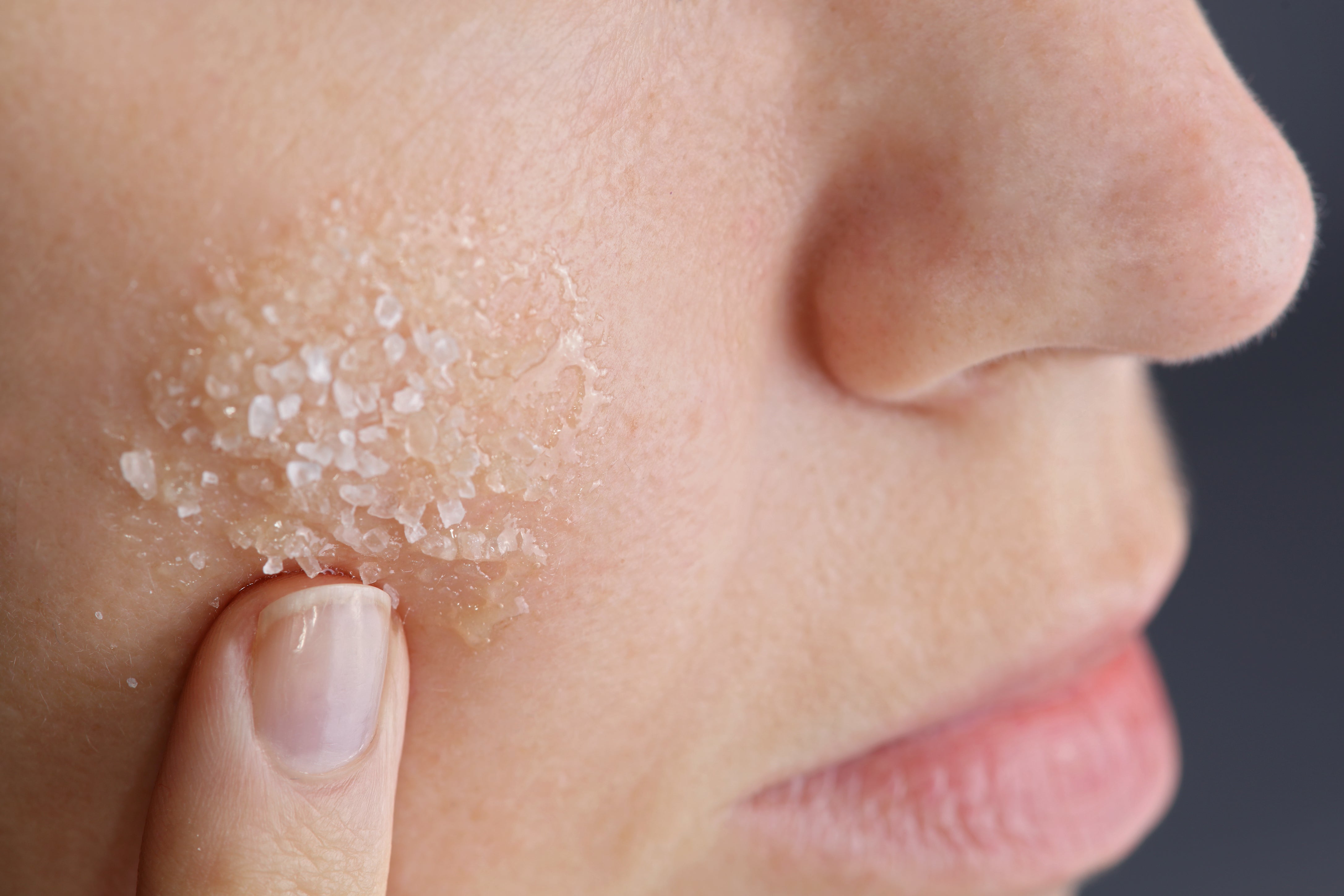
Less common is persistent erythema characterized by extensive areas of redness resembling bruising or bruising. Such a problem can lead to the development of rosacea, therefore, it requires an examination and consultation with a dermatologist.
Urticaria . A fairly common cause of skin rashes, which is often characterized by a long course. Under the urticaria understand a whole group of diseases that lead to the formation of angioedema and blisters. Urticaria can result from medications, certain foods, and supplements. In rare cases, pathology occurs as a result of infections.
Chicken pox . Chickenpox is infectious and can be dangerous to health. This pathology is complicated by pustular lesions, stomatitis and conjunctivitis, in rare cases, damage to internal organs and the brain occurs.
Chickenpox is one of the common causes of red spots on the skin. As a rule, the rashes are small, localized throughout the body. Further, bubbles up to 5 mm in diameter are formed, which after 2–3 days become covered with a dry crust. Both spots and vesicles can be present on the skin at the same time.
Both spots and vesicles can be present on the skin at the same time.
Ringworm . This is a pathology of fungal origin, which is known in dermatology under the term “microsporia”. The causative agent of pathology is a fungus of the genus Microsporum, which parasitizes in the stratum corneum of the epidermis. It is because of it that the skin is covered with rounded spots that have a non-uniform color: the center is lighter, while the edges of the formation may have a bright red tint. As a rule, rashes are found on the head, arms and legs.
Pityriasis versicolor . Another type of infectious disease that leads to damage to the upper layers of the skin. However, this form of the disease is not contagious and rarely leads to serious consequences, but it is characterized by fairly large lesions. Pathology occurs as a result of some autoimmune disorders, excessive sweating, hormonal problems, etc.
Eczema . This inflammatory skin disease has an allergic nature, but the causes and prerequisites for its development are still not fully understood. Often the disease is called “weeping lichen” due to the presence of characteristic symptoms.
Often the disease is called “weeping lichen” due to the presence of characteristic symptoms.
Initially, inflamed areas appear on the skin in the form of red spots, which gradually merge into a separate affected area. After that, characteristic nodules with a bright red color and clear boundaries are formed. Bubbles quickly open, which leads to the appearance of point erosions, which are replaced by crusts and peeling.
Photodermatitis . The reason for the development of such a pathology is the increased sensitivity of the epidermis to ultraviolet radiation. As a result, persistent redness of the skin appears, which can be accompanied by itching, burning, and even blisters. Often there are large red spots on the skin. It should be noted that the symptoms of the condition are very similar to a number of dermatological diseases (for example, in many patients, photodermatitis has all the signs of systemic lupus erythematosus), which complicates the diagnostic process.
Important!
The information in this article should not be used for self-diagnosis or self-treatment. For staging
correct diagnosis and treatment should always consult a doctor.
Psoriasis . One of the most common dermatological diseases is psoriasis. Pathology has an autoimmune origin, the causes of its development can be infectious, psychosomatic, hereditary or mixed.
Characteristic raised spots with a smooth surface appear on the skin. After a few days, they become covered with white scales, itching occurs. Many patients note dryness and flaking of the skin, and cracks and blisters are also found in advanced cases.
Atopic dermatitis . This chronic inflammatory disease is confused with eczema, although there are a number of differences between the pathologies. AtD is characterized by the appearance of red spots with peeling on various parts of the body. Most often, rashes are localized on the bend of the elbow and knee joints, neck and face.
As a rule, pathology occurs in childhood and its appearance is facilitated by a whole range of factors (both external and genetic). In half of the cases, atopic dermatitis disappears over time, in the remaining patients it persists and recurs throughout life.
Helminthiases . One of the causes of red rashes is exposure to toxic substances that are released during the life of parasites. The size and location of the formations vary depending on the degree of intoxication of the body. As a rule, a rash appears first, which is accompanied by itching and skin irritation. In the future, purulent boils may appear.
Fungal mycosis . A fairly serious disease, a malignant lymphoid lesion, which is characterized by the appearance of red dry plaques (that is, large-sized elements that rise above the surface of the skin). Outwardly, the formations resemble eczema, but have a rounded shape and clear boundaries.
Hyperhidrosis . An unobvious cause of red round spots on the skin is hyperhidrosis. This is a functional disorder of sweating, characterized by the release of an increased amount of sweat. As a result of this, redness appears in the armpits and in other areas that are affected by the pathology.
This is a functional disorder of sweating, characterized by the release of an increased amount of sweat. As a result of this, redness appears in the armpits and in other areas that are affected by the pathology.
Emotional experiences . As a result of psychological disorders and excitement, characteristic redness periodically appears on the neck and face. This problem is the result of depression, emotional overload, chronic lack of sleep. In rare cases, the problem is accompanied by itching, swelling and peeling.
Diagnostic methods
In the event that a red spot appears on the skin that does not go away within a few days or changes its shape / appearance, it is better to seek the advice of a dermatologist. Such a measure will not be superfluous, as it will identify the causes of rashes and exclude serious pathologies. The presence of the following symptoms should alert:
- Itching or burning.
- Peeling of the skin.
- Increased size or number of spots.

- Soreness on pressure.
- Swelling, weeping.
- The beginning of the inflammatory process.
To determine the nature and characteristics of the formations, the doctor performs an examination using a dermatoscope. Of key importance is the collection of anamnesis, clarification of symptoms, identification of concomitant diseases. After the examination, the specialist appoints the patient a number of additional studies, among which may be:
- Complete blood count.
- Urinalysis.
- Microscopic examination of skin scrapings.
- Ultrasound of internal organs.
- ECG, etc.
If necessary, the patient is assigned a consultation with other specialists: for example, a therapist, endocrinologist, gastroenterologist, etc. As a result of such an examination, it will be possible to identify comorbidities and determine which diseases provoked red spots on the skin.
Differential diagnosis is important at this stage, since sometimes rashes in various pathologies can be identical. That is why it is required to exclude the presence of other diseases and allergic reactions.
That is why it is required to exclude the presence of other diseases and allergic reactions.
Already during the examination, the doctor may suspect the presence of a particular pathology. The existing symptoms and the appearance of the spots are taken into account. For example:
- Red rashes that look like mosquito bites but without itching or pain are often the result of stress or anxiety. In rare cases, this may be a manifestation of an allergy or pink lichen Zhibera.
- Spots associated with soreness or itching may indicate the presence of autoimmune diseases, urticaria or psoriasis.
- A rash that looks like a burn is often a manifestation of atopic dermatitis. They may be accompanied by itching (especially at night).
- Red sores or plaques along the hairline may be a symptom of seborrheic dermatitis.
- Small spots all over the body indicate the presence of measles, chickenpox or lichen. Also, such symptoms occur in some patients with coronavirus.

- Red rough spots on the skin of the hands indicate a lack of certain vitamins and microelements in the body. In most cases, you can compensate for their lack by changing the diet.
Methods of treatment
The treatment of the problem is individual, since when drawing up the scheme, the doctor takes into account the patient’s state of health, the identified pathologies and the presence of symptoms. An integrated approach is always used for the treatment of spots, which includes various conservative methods:
- Medical therapy.
- Local therapy (treatment of the skin).
- Physiotherapy procedures.
Radical removal procedures are rarely required. During treatment, the patient may need to adjust the diet and avoid interaction with allergens. At the same time, in most cases, the use of traditional medicine is unacceptable, since they aggravate the course of the disease and lead to the development of a chronic process.
Different groups of drugs are used for drug therapy. Most often it is:
- Antihistamines . With a severe allergic reaction or exacerbation of eczema.
- Antibiotics . To combat the infectious nature of different types of red spots on the skin.
- Glucocorticosteroids . Hormonal agents to relieve inflammation.
- Tranquilizers . Used to relieve severe itching.
- Diuretics . Drugs to eliminate puffiness.
- Enterosorbents . To remove the products of intoxication from the intestines.
- B vitamins . They are used to normalize the functioning of the nervous system.
As for the radical methods of treatment, they include electrocoagulation, laser removal and cryosurgery (exposure to liquid nitrogen). Such procedures are used in cases where conservative treatment did not bring relief to the patient or cosmetic defects remained after the therapy.
If we talk about the prevention of red spots, then there are no universal recommendations, since it is always necessary to take into account the cause of the pathology. In order to reduce the likelihood of rashes, it is best to exclude contact with stray animals, refuse products that cause allergies, and regularly undergo preventive examinations with doctors. This will allow early detection of any disturbances in the functioning of the immune system and prevent possible diseases of the internal organs.
Literature
- Karavaeva TA, Korolkova TN Psychological mechanisms and psychosomatic correlations in various dermatoses // Clinical dermatology and venereology. – 2018. – V. 17, No. 5. – S. 7–16.
- Kubanova AA Analysis of the incidence of diseases of the skin and subcutaneous tissue in the Russian Federation for the period 2003–2016.





 In this case, bright red or red-bluish rashes appear, which may lighten with time. Spots of small diameter (up to 20-25 mm) are called roseola, in other cases we are talking about erythema. If all skin integuments are included in the pathological process, erythroderma occurs.
In this case, bright red or red-bluish rashes appear, which may lighten with time. Spots of small diameter (up to 20-25 mm) are called roseola, in other cases we are talking about erythema. If all skin integuments are included in the pathological process, erythroderma occurs.
